From Above, Solar Farms Look Like Tetris Pieces Left Behind By Giants

Topaz Solar Farm, in California’s Carrizo Plain (Image: NASA Earth Observatory)
Of all the ways that people have altered the surface of the earth, solar power plants do not rank high. The United States covers 2.4 billion acres and more than 400 million of those have been co-opted as cropland. Cities take up 61 million acres. For solar power technology to produce enough electricity to cover the country’s demand, something like 15 million acres would have to become giant fields of photovoltaic panels and heliostat mirrors basking in the sun.
The amount of land that solar projects are taking up isn’t even close to that yet. But individual projects are getting bigger, and changing the places where they’re built. A decade ago, the largest field of solar panels in the world covered 177 acres. Today, the largest photovoltaic plant covers 3,200 acres in two counties and the largest solar thermal station, where mirrors concentrate energy at a point atop a large tower, covers 3,500 acres.
These large projects don’t necessarily appear on the horizon the way nuclear cooling stacks appear on the edge of town or wind turbines occupy fields that stretch for miles along western highways. Many of the largest solar projects are in deserts, far from regular traffic.
As with farms and gas fields, one of the only ways to get a clear picture of their scope—and how fast they’re growing—is by looking down from above.
 The Dunhuang project. (Images: NASA Earth Observatory)
The Dunhuang project. (Images: NASA Earth Observatory)
The city of Dunhuang, built in an oasis in Western China, was once an important stop on the Silk Road. The desert outside the city remained essentially empty until 2009, when construction started on a solar power plant. By 2010, the first section was turned on; by 2012 it had spread west. By 2015 the project covered more than 3 times the area it had just a few years before.
Compared to the sprawl of irregular rectangle fields of panels, concentrating solar power projects are geometrically pleasing. Since these projects depend on directing amazing amounts of energy to one point, the mirrors that capture and reflect the sun’s rays must be arranged in concentric rows around a single, tall tower that gathers up the light and converts it to heat.
From above, the Crescent Dunes Solar Energy Project’s more than 17,000 mirrors, which cover 1,600 acres, look like a bulls-eye, or a mesmerizing portal that might suck you into another dimension.
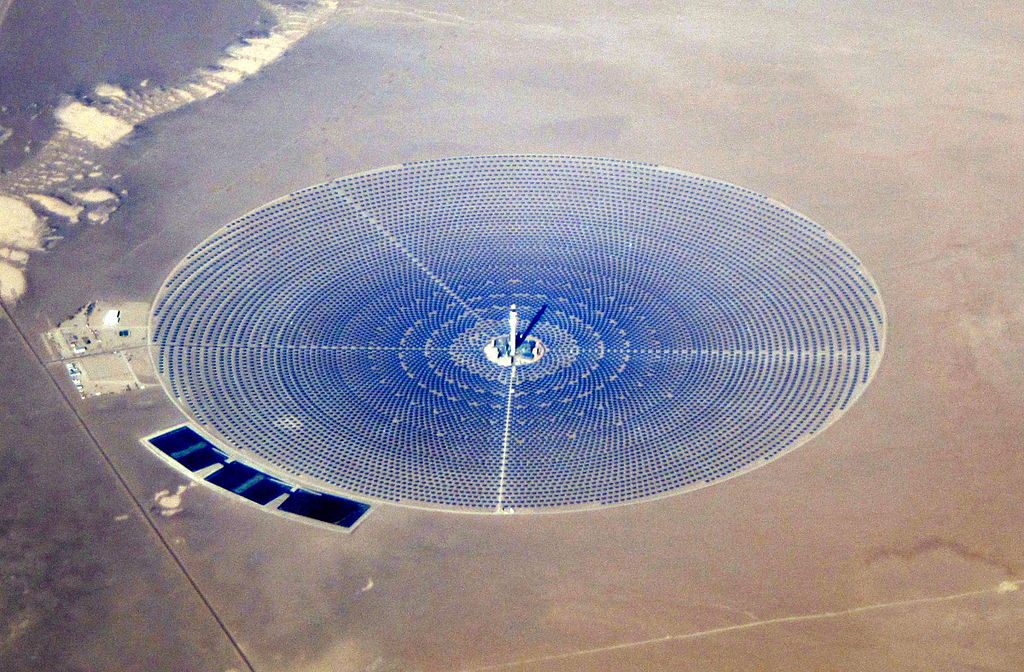 Crescent Dunes (Image: Amble/Wikimedia)
Crescent Dunes (Image: Amble/Wikimedia)
From above, the outskirts of Sevilla, Spain—the city’s in the right hand corner—are a mash of fields and streams. Two solar projects, Solar Planta 10 and 20, towards the top left, are look like puzzle pieces jammed into the wrong jigsaw.
 Sevilla, from above (Image: NASA/Wikimedia)
Sevilla, from above (Image: NASA/Wikimedia)
Here they are closer up, mirrors neatly arrayed over 135 acres.
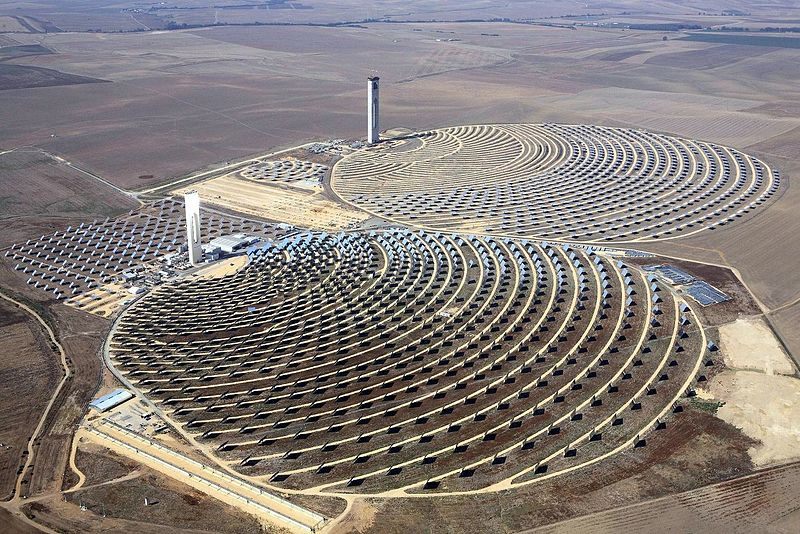 PS 10 and 20 (Photo: Koza1983/Wikimedia)
PS 10 and 20 (Photo: Koza1983/Wikimedia)
 The Gemasolar project, in Sevilla, Spain, covers 480 acres. (Image: © Google 2015)
The Gemasolar project, in Sevilla, Spain, covers 480 acres. (Image: © Google 2015)
Zoom out, though, and even the largest plants look like dusty, awkward pimples on the Earth. This is Ivanpah, currently the largest concentrated solar power facility in the world, in the Mojave Desert. Swoop closer, like the photographer Jamey Stillings, who’s been documenting the project’s evolution, and you can see the individual mirrors with their faces tilted towards the sun or the land textured like a pin art toy.
 Ivanpah from above (Image: NASA Earth Observatory)
Ivanpah from above (Image: NASA Earth Observatory)
Solar panel projects, on the other hand, look like giant tangram shapes or Tetris pieces left lying out among the mountains.
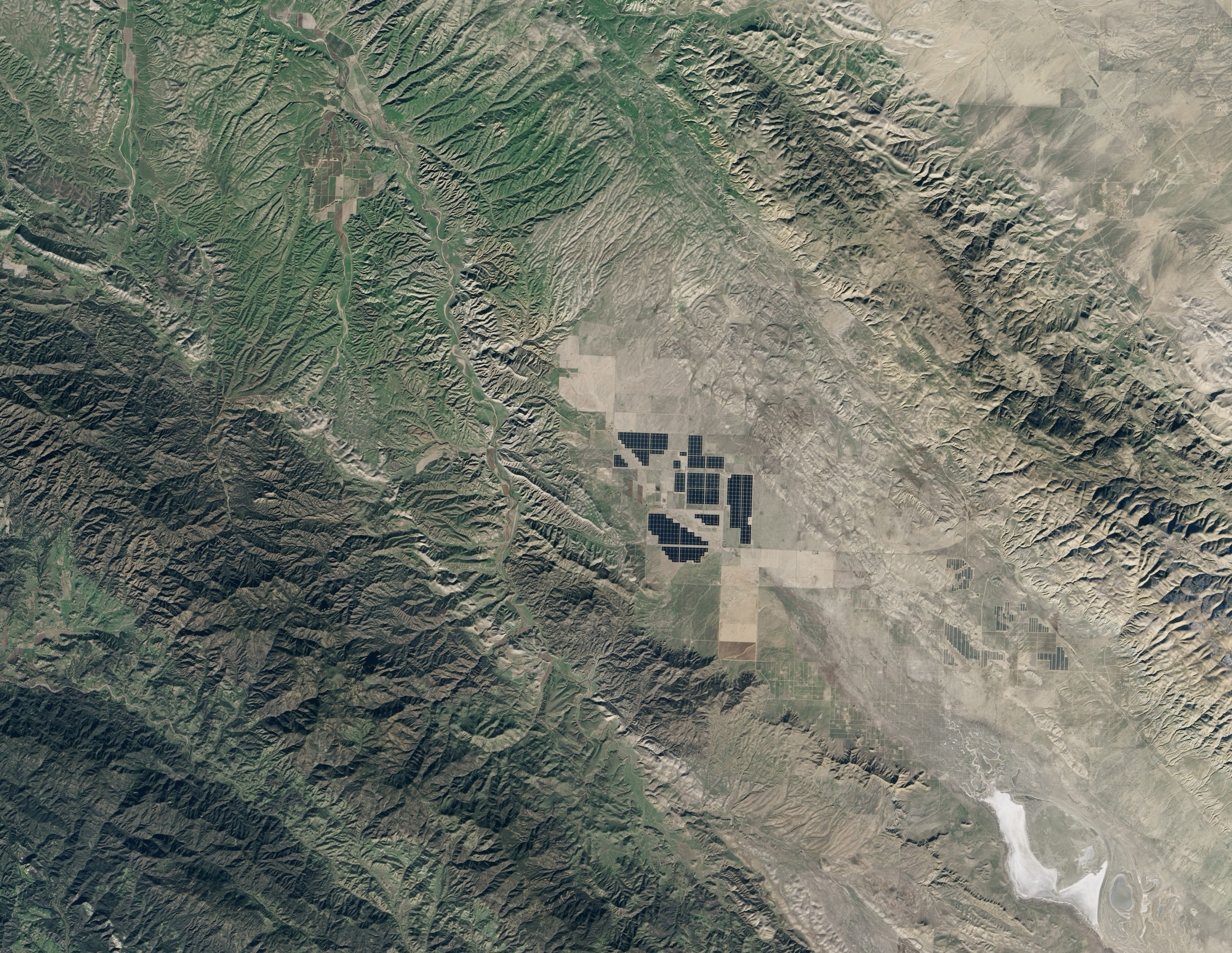 Topaz Solar Farm, in California’s Carrizo Plain (Image: NASA Earth Observatory)
Topaz Solar Farm, in California’s Carrizo Plain (Image: NASA Earth Observatory)
 India’s Charanka Solar Park, one of the largest in the world (Image: © Google 2015)
India’s Charanka Solar Park, one of the largest in the world (Image: © Google 2015)
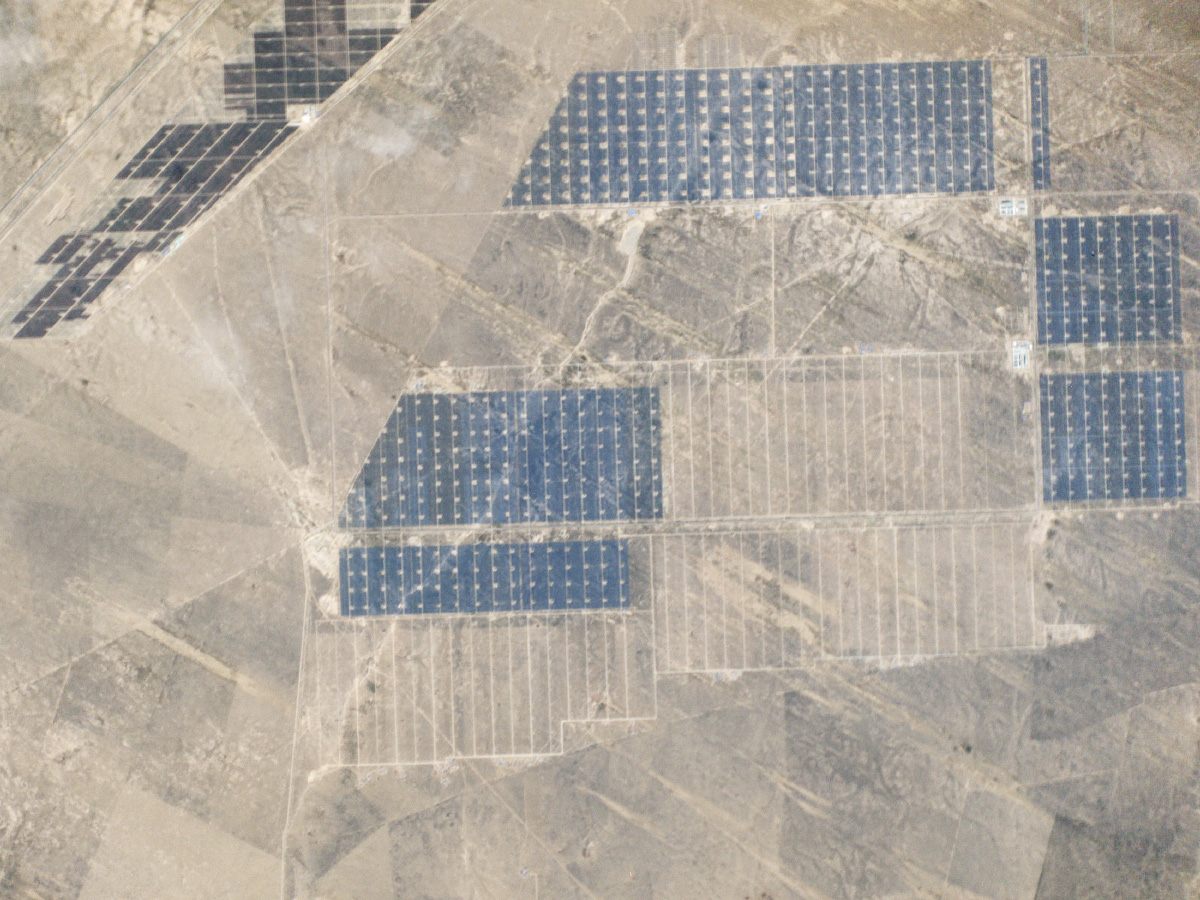 Longyangxia Dam Solar Park, the 7th largest solar project in the world (Image: Planet Labs Inc)
Longyangxia Dam Solar Park, the 7th largest solar project in the world (Image: Planet Labs Inc)
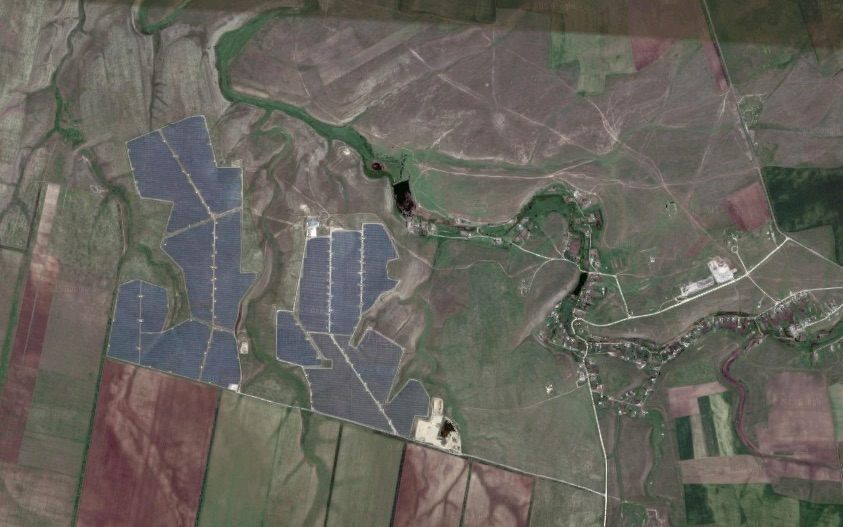 Perovo Solar Power Station, in Crimea, was one of the largest…in 2012, but not anymore (Image: Google 2015)
Perovo Solar Power Station, in Crimea, was one of the largest…in 2012, but not anymore (Image: Google 2015)
The amount of solar power being generated is still small, but it’s growing. Soon satellites will be able to spot more shining circles and black geometries than ever before. And it’s not just the Earth’s surface that we’re thinking of changing. NASA’s long imagined how we might start installing solar fields on the Moon, too.
 NASA has been thinking of how solar power would work on the moon for decades. (Image: NASA/Wikimedia)
NASA has been thinking of how solar power would work on the moon for decades. (Image: NASA/Wikimedia)
 These mock-ups are from the 1980s (Image: NASA/Wikimedia)
These mock-ups are from the 1980s (Image: NASA/Wikimedia)







Follow us on Twitter to get the latest on the world's hidden wonders.
Like us on Facebook to get the latest on the world's hidden wonders.
Follow us on Twitter Like us on Facebook